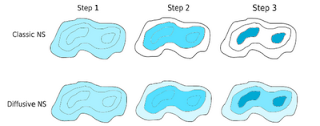How do you learn?
As a student, I have always been inspired by the class environment for teaching and learning.
One of the best way that I could point out is the fact that students learn by the looking at what the teacher is doing to solve the problem. For example, when my teacher was teaching the anatomy of an earthworm, just by looking at the picture, the way he drew it, I mastered it as soon as he finished drawing. Segment by segment, organ by organ. That was one of the amazing experience of biology class with me. By drawing the figure along with hearing the description worked at that time. Similarly, I had a full body size human skeleton system drawn on my wall. It just worked straight out of board into brain.
So, when people talk about the interactive display of pictures in the biology classes, I feel what if I was in that class. What if my teacher had decided to bring a poster of earthworm instead of drawing it in the borad? could I learn it the same way?
Different students have different ways of learning. That was just one of the several case with me. Some people better learn by looking at the picture while being described. We all learn differently.
There are basic three kinds pointed in literatues:
- kinesthetic
- visual
- auditory
In the classroom environments with bunch of students with different learning tendencies mixed together, is just like a puzzle spread around the room. An effective teacher is the one who has an art of touching everyone's style. Putting a video from
MIT opencourse ware can be fun, but putting a video on the screen might not always be the best way to go.
Being innovative is rewarding because here is the tricky part:
they are going to teach your kids some day.
:P




